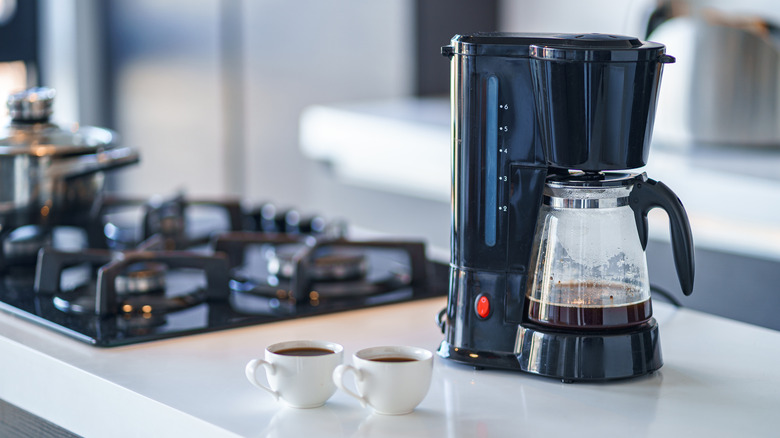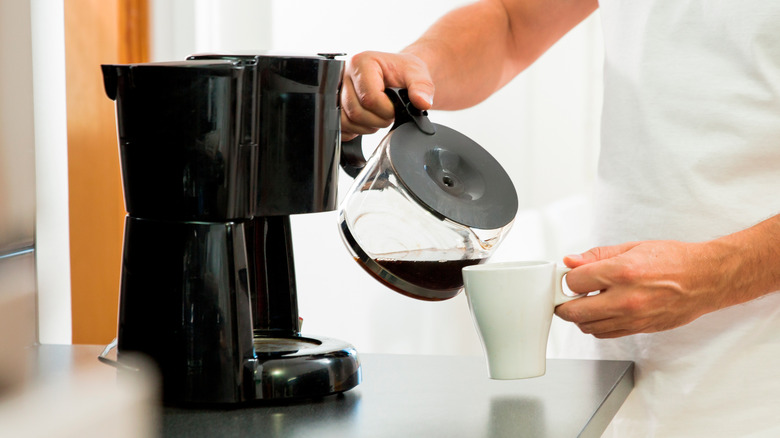What Does Descaling Your Coffee Maker Actually Do?
If you're a coffee aficionado, you might already have a method (and maybe even a schedule) for cleaning your preferred brew machine to keep it in its best condition. If not, you might want to know you should probably be cleaning your coffee maker more than you think, and even if you have a Keurig machine, you should also make sure you find regular time for deep cleanings — including the very necessary step to descale your coffee maker, which is too often left out of the process.
According to The Kitchn, grit builds up in your coffee maker because, when you boil water, small amounts of minerals from the water remain. Over time, this can become limescale, and if you don't descale it, this can become an issue.
Urnex says that a few problems can develop because of this buildup, like clogging the waterflow (which can eventually prevent your coffee maker from working) or preventing your coffee from being as flavorful. Ultimately, descaling your coffee maker ensures proper function and better taste. All of this maintenance might seem a little tedious, but trust us, you'll get a lot more deliciousness out of your morning cup of coffee with this easy step.
How to descale your coffee maker
One method for adhering to this important step to buy a descaling solution — you can find many of these online, like those recommended on this list from The Woke Lark. Simply follow the instructions noted on each product.
Another method is to descale your coffee maker with household products, like vinegar or citric acid. The Kitchn notes that using vinegar might leave a strange aftertaste, "like it was brewed in a pickle factory," but it's an option if citric acid isn't on hand. And if you run hot water through the machine a few times after descaling, that taste will go away.
Molly Maid gives a simple step-by-step guide to descaling your coffee maker with vinegar. Essentially, after you make sure your coffee maker doesn't have any grounds left in it, you'll mix a concentration of white vinegar and water to pour into the machine and then put it through a brew cycle. Do the same step again, with just water. And of course, you'll want to run water through the brew cycle multiple times to get rid of the vinegar taste. The Kitchn's method with using citric acid is fairly similar. And with just a few steps, your machine is good as new and ready to fuel you for another day.

